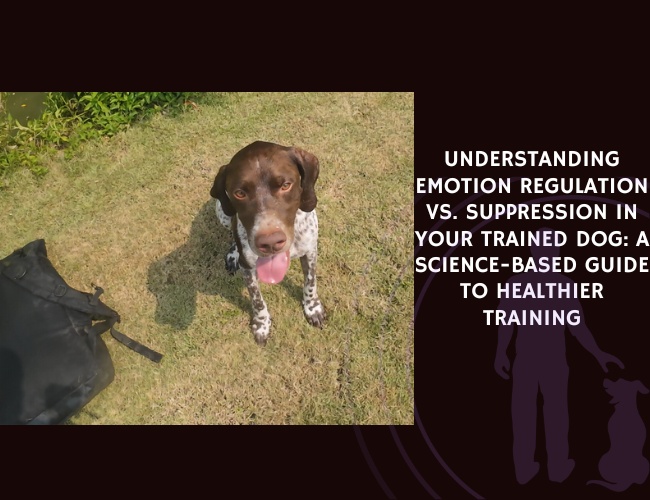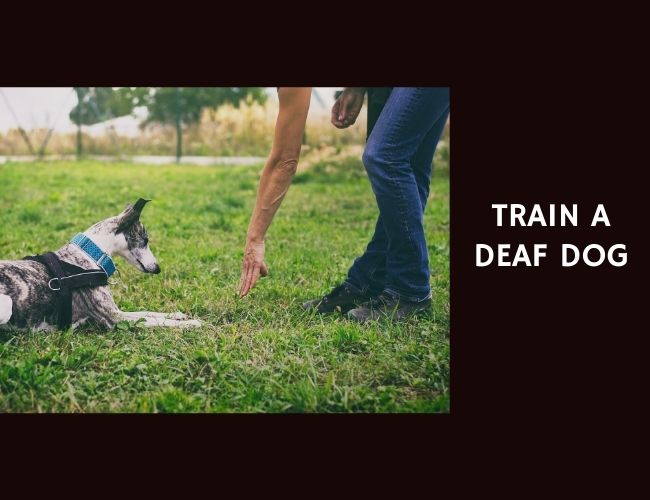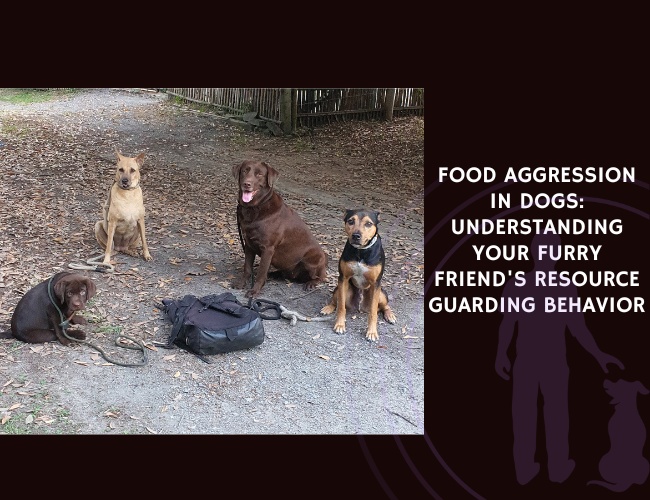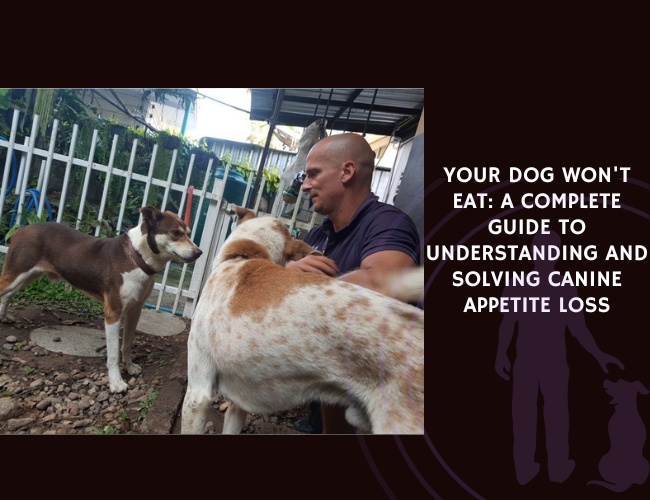Introduction: The Hidden Emotional World of Our Canine Companions
Have you ever watched a perfectly trained dog perform commands with mechanical precision, yet something felt… off? Perhaps their tail was tucked just slightly, or their eyes seemed distant despite their flawless execution. You might have witnessed the difference between genuine emotional self-regulation and mere emotion suppression—a distinction that could transform how we understand our dogs’ wellbeing.
In the world of dog training, we’ve long celebrated obedience and control. But recent advances in canine behavioral science reveal a more nuanced picture: not all “good behavior” is created equal. When your furry friend sits calmly during a thunderstorm, are they genuinely managing their emotions, or have they simply learned to hide their fear? This fundamental question shapes not only our training approaches but also our dogs’ long-term psychological health.
Let us guide you through the fascinating science of canine emotion regulation, where neuroscience meets compassionate training. You’ll discover how to recognize the subtle signs that distinguish a truly emotionally balanced dog from one who’s merely learned to mask their feelings. More importantly, you’ll learn how different training methods can either foster genuine emotional resilience or inadvertently teach our dogs to suppress their natural responses—with profound implications for their wellbeing. 🧡
Understanding Emotion Regulation vs. Suppression
The Science Behind Canine Emotional Processing
When we talk about emotion regulation in dogs, we’re referring to the adaptive processes that help them manage their emotional experiences in healthy, flexible ways. Think of it as your dog’s internal emotional thermostat—adjusting naturally to maintain balance. This differs fundamentally from emotion suppression, where dogs learn to hide or inhibit their emotional expressions without actually processing the underlying feelings.
Key Differences You Need to Know:
- Emotion Self-Regulation (ESR): This adaptive strategy involves your dog genuinely changing how they feel about a situation. It’s like teaching them to see the vacuum cleaner not as a terrifying monster, but as a harmless household object. The fear dissipates naturally because their perception has shifted.
- Emotion Suppression (ES): Here, your dog still feels the fear but has learned to hide it. They might sit still when the vacuum appears, but internally, their stress hormones are surging. It’s the canine equivalent of putting on a brave face while feeling terrified inside.
- Observable Markers: A self-regulating dog shows fluid body language and returns quickly to baseline after challenges. A suppressing dog might appear “flat” or show subtle stress signals like lip licking, yawning, or muscle tension despite outward compliance.
The Neurological Landscape of Canine Emotions
Your dog’s brain processes emotions through complex networks involving the amygdala (the fear center) and prefrontal cortex (the control center). When dogs truly self-regulate, these regions work in harmony—the prefrontal cortex helps modulate the amygdala’s response, creating genuine emotional balance. During suppression, however, the amygdala remains highly active while behavioral inhibition systems work overtime to mask the response.
Research in working dogs has identified core brain networks that predict trainability and behavioral flexibility. These same networks play crucial roles in emotional processing. When training supports genuine regulation, we see enhanced connectivity between emotion-processing and control regions. When it promotes suppression, we often see signs of chronic stress activation—even in seemingly “well-behaved” dogs.
Did you know that dogs trained with connection-based methods show different brain activation patterns compared to those trained with aversive techniques? The former develop more robust emotion regulation networks, while the latter often show patterns consistent with chronic stress and suppression. 🐾
How Training Methods Shape Emotional Processing
The Impact of Aversive Training Systems
Traditional training methods that rely on punishment or coercion create a specific emotional landscape for your dog. When we consistently punish natural emotional expressions—whether it’s barking at a stranger or jumping with excitement—dogs don’t learn to feel differently about these triggers. Instead, they learn that expressing their feelings leads to unpleasant consequences.
What Happens in Aversive Training:
- Fear of Expression: Dogs learn that showing emotions like excitement, fear, or frustration results in correction. This doesn’t change the underlying emotion; it merely teaches them to hide it.
- Chronic Stress Activation: The constant need to monitor and suppress natural responses keeps stress systems chronically activated. Even when the dog appears calm, their body remains in a state of vigilance.
- Behavioral Rigidity: Instead of developing flexible coping strategies, dogs develop rigid behavioral patterns designed to avoid punishment. This limits their ability to adapt to new situations naturally.
Consider a dog trained to stop barking through shock collar use. While they may become quiet, research shows their cortisol levels often remain elevated long after the training session. They haven’t learned to feel calm about their triggers—they’ve learned that expressing their discomfort is dangerous.
Connection-Based Training: Fostering Genuine Regulation
Modern, science-based training approaches work with your dog’s natural emotional systems rather than against them. These methods recognize that behavior flows from emotion, and by addressing the emotional root, we create lasting, healthy change.
The Connection-Based Approach Includes:
- Positive Associations: Rather than punishing unwanted behaviors, we create positive emotional associations with previously challenging situations. Your dog learns to genuinely feel good about things that once triggered negative emotions.
- Choice and Agency: Dogs are given opportunities to make choices, building confidence and emotional resilience. This develops their internal capacity for self-regulation rather than relying on external control.
- Emotional Validation: Natural emotional expressions are acknowledged and redirected rather than punished. A jumping dog might be taught to channel excitement into a sit-for-greeting routine, preserving the joy while shaping the behavior.
When you use positive reinforcement to help your dog feel safe during thunderstorms—perhaps through gentle desensitization and creating positive associations—you’re not just changing behavior. You’re literally rewiring their emotional response system, building genuine resilience rather than mere compliance.
The Special Case of Working Dogs
Service dogs, therapy dogs, and other working canines face unique emotional challenges. Their training must prepare them for high-stress situations while maintaining emotional balance. The most successful programs now recognize that teaching task behaviors isn’t enough—these dogs need robust emotional self-regulation skills.
Some concerning patterns have emerged in certain service dog training approaches. For instance, dogs trained for PTSD support through “blocking” behaviors (physically intervening when their handler shows distress) might inadvertently reinforce avoidance patterns rather than promoting emotional processing. The most effective programs now balance task training with emotional resilience building, ensuring dogs can perform their duties without sacrificing their own psychological wellbeing.
Recognizing the Signs: Is Your Dog Regulating or Suppressing?
Behavioral Indicators of Emotional Suppression
Learning to read the subtle signs of suppression versus regulation can transform your relationship with your dog. While both might result in “good behavior,” the underlying emotional states—and long-term consequences—differ dramatically.
Signs Your Dog May Be Suppressing Emotions:
- The “Shutdown” Look: Eyes appear glazed or distant, body seems frozen or unnaturally still, movements are mechanical rather than fluid
- Displacement Behaviors: Excessive lip licking, yawning when not tired, sudden scratching or sniffing when faced with triggers, looking away persistently
- Delayed Responses: Hesitation before complying with known commands, as if weighing consequences rather than responding naturally
- Tension Patterns: Tight facial muscles, clenched jaw, rigid tail position (even if wagging), stiff gait or movement patterns
You might notice these signs particularly in situations where your dog has been heavily trained to remain “calm”—during greetings, around food, or in previously challenging scenarios. A suppressing dog performs the required behavior but lacks the emotional ease of a truly regulated dog.
Markers of Healthy Emotional Self-Regulation
A dog who has developed genuine emotional regulation skills presents a strikingly different picture. Their behavior flows from internal balance rather than external pressure, creating a sense of authentic calm and confidence.
Signs of Genuine Self-Regulation:
- Fluid Transitions: Smooth shifts between different emotional states—excitement to calm, alertness to relaxation—without getting “stuck”
- Appropriate Emotional Expression: Shows excitement when appropriate, calm when needed, with emotions matching the situation rather than being uniformly suppressed
- Quick Recovery: Returns to baseline quickly after challenging situations, shaking off stress naturally rather than carrying tension
- Engaged Presence: Bright, focused eyes, relaxed facial features, body posture that’s alert but not tense, natural tail position and movement
Watch a well-regulated dog greeting visitors: they might show initial excitement, then naturally settle as they process the situation. Compare this to a suppressing dog who might remain rigidly in place, showing no emotional response despite internal arousal—the difference becomes clear with practice.
Physiological Clues: What Science Tells Us
Beyond behavior, physiological markers provide objective insights into your dog’s emotional state. While we can’t easily measure brain activity at home, understanding these markers helps us interpret what we observe.
Heart Rate Variability (HRV): Dogs with good emotional regulation show healthy HRV patterns—their heart rate naturally varies with breathing and activity. Suppressing dogs often show reduced HRV, indicating chronic stress even during “calm” behavior.
Stress Hormone Patterns: Cortisol levels in well-regulated dogs spike appropriately during challenges then return to baseline. Suppressing dogs often show chronically elevated baseline cortisol or blunted stress responses—both indicating dysregulation.
Pupil Dilation and Arousal: Recent research links pupil responses to emotional processing. Regulated dogs show appropriate pupil changes matching their emotional state. Suppressing dogs might show dilated pupils despite outwardly calm behavior, revealing internal arousal.

The Physiological and Neurological Impact
Understanding Your Dog’s Stress Response System
Your dog’s body tells a story that behavior alone cannot reveal. When we understand the physiological consequences of suppression versus regulation, the importance of fostering genuine emotional skills becomes undeniable.
The canine stress response system evolved for short-term challenges—flee from predator, rest and recover. Modern life, especially with suppression-based training, can keep this system chronically activated. Imagine driving a car with the parking brake partially engaged; everything still works, but the strain accumulates over time.
Chronic Suppression Creates:
- Elevated Baseline Stress: Stress hormones remain high even during rest, impacting immune function, digestion, and cognitive ability
- Reduced Stress Recovery: The ability to “bounce back” from challenges diminishes, making each stressor more impactful
- Behavioral Rigidity: Chronic stress reduces behavioral flexibility, making it harder for dogs to adapt to new situations
- Health Consequences: Long-term suppression links to increased risk of anxiety disorders, compulsive behaviors, and even physical health problems
The Brain Under Pressure: Neurological Changes
Recent neuroscience research reveals how different training approaches literally shape your dog’s brain. The networks involved in emotional processing show distinct patterns depending on whether a dog has learned regulation or suppression.
In Regulated Dogs, We See:
- Enhanced Prefrontal-Amygdala Connectivity: The thinking brain effectively communicates with the emotional brain, allowing thoughtful responses to emotional triggers
- Flexible Network Activation: Brain networks activate and deactivate appropriately, supporting adaptive responses to changing situations
- Neuroplasticity Markers: Continued ability to form new neural connections, supporting ongoing learning and adaptation
In Suppressing Dogs, We Find:
- Amygdala Hyperactivity: The fear center remains highly active even during outward calm, creating internal distress
- Reduced Prefrontal Control: The regulatory regions struggle to modulate emotional responses effectively
- Rigid Neural Patterns: Reduced plasticity makes it harder to learn new, healthier emotional responses
These neurological differences explain why suppressing dogs often struggle with novel situations—their brains have adapted for control, not flexibility. It’s like learning to play piano with tense fingers; you might hit the right notes, but the music lacks flow and eventually, the strain shows.
The Autonomic Nervous System Story
Your dog’s autonomic nervous system—controlling heart rate, digestion, and other automatic functions—provides another window into their emotional state. This system has two main branches: sympathetic (fight/flight) and parasympathetic (rest/digest).
Healthy emotional regulation involves flexible switching between these states. Your dog activates their sympathetic system when excited or challenged, then smoothly transitions to parasympathetic recovery. It’s like having a well-tuned thermostat that responds appropriately to temperature changes.
Suppression disrupts this balance. Dogs remain sympathetically activated even during “calm” behavior, like keeping the heat on during summer while opening windows to appear cool. This dysregulation affects everything from digestion to sleep quality, creating cascading effects on overall health. 🐾
Building Genuine Emotional Resilience in Your Dog
Foundation Principles for Emotional Development
Creating genuine emotional regulation in your dog requires patience, understanding, and a commitment to their internal experience rather than just external behavior. Think of it as teaching emotional intelligence rather than mere obedience.
Core Principles to Remember:
- Safety First: Your dog cannot develop healthy regulation in an environment where they fear punishment. Physical and emotional safety form the foundation for all learning.
- Validate Before Redirecting: Acknowledge your dog’s emotions before asking for different behavior. A simple “I know that’s exciting!” before requesting a sit validates their experience.
- Build Gradually: Emotional skills develop incrementally. Start with low-intensity triggers and gradually increase challenge levels as your dog builds confidence.
- Celebrate Choice: Offer opportunities for your dog to make decisions, building their sense of agency and internal motivation for regulation.
Practical Strategies for Everyday Training
Let’s translate these principles into actionable strategies you can implement today. Remember, we’re not just changing behaviors—we’re nurturing emotional growth.
For Excitement Management:
Instead of punishing jumping or excessive enthusiasm, create positive outlets. Teach your dog that sitting earns attention, but do so through reward rather than correction. Practice “excitement circuits” where your dog alternates between high energy play and calm settling, building their ability to self-regulate naturally.
For Fear and Anxiety:
Never force your dog to “face their fears” through flooding or intimidation. Instead, use systematic desensitization paired with positive associations. If your dog fears thunderstorms, start by playing recorded thunder at barely audible levels while engaging in favorite activities. Gradually increase volume over weeks or months as your dog develops positive associations.
For Frustration Tolerance:
Build this crucial skill through games and structured activities. Practice “wait” with increasing duration, but make it fun—use treats, toys, and praise to create positive associations with patience. The goal isn’t compliance through suppression but genuine comfort with delayed gratification.
The Power of Connection in Regulation
Your relationship with your dog serves as their emotional regulation scaffold. Just as children learn emotional skills through secure attachment with caregivers, dogs develop regulation through their bond with you.
Strengthening Co-Regulation:
- Be a Calm Presence: Your emotional state directly impacts your dog. Practice your own regulation skills to model the calm confidence you want to see.
- Attune to Their Needs: Learn to read your dog’s subtle signals and respond appropriately. Sometimes they need space, sometimes comfort, sometimes guidance.
- Consistent but Flexible: Maintain consistent expectations while remaining responsive to your dog’s emotional state. Rigidity breeds suppression; flexibility fosters regulation.
When your dog looks to you during a challenging situation, they’re seeking co-regulation. Your calm presence and appropriate response help them process the experience rather than simply endure it. This collaborative emotional processing builds their independent regulation skills over time.
Safe. Seen. Stable.
Your dog isn’t calm because you said so — they’re calm because they feel safe.
True regulation begins when a dog feels secure enough to express, explore, and adjust their emotions freely. Suppression may look obedient, but safety is what builds resilience.
Emotion is not the enemy — disconnection is.
When we punish expression, we disconnect from the emotional truth underneath. But when we validate, guide, and rewire gently, we nurture a brain that learns, adapts, and recovers — not one that hides and stiffens.



A healthy dog isn’t just well-behaved — they’re emotionally fluent.
Look past compliance. Watch for fluid movement, curious eyes, smooth recovery. That’s not training that controls — it’s training that heals.
Advanced Training Considerations
Working with Traumatized or Anxious Dogs
Dogs with trauma histories or anxiety disorders face unique challenges in developing emotional regulation. Their amygdala hypersensitivity means emotional triggers hit harder and last longer. Traditional training often fails these dogs, pushing them deeper into suppression or triggering explosive responses.
Trauma-Informed Approaches Include:
- Expanded Safety Zones: These dogs need extra time and space to feel secure. Rushing progress inevitably leads to setbacks or suppression.
- Predictability and Choice: Traumatized dogs benefit enormously from predictable routines and having choices. This rebuilds their sense of control and safety.
- Somatic Approaches: Focus on body-based calming techniques like gentle massage, TTouch, or structured movement to help regulate their nervous system.
- Professional Support: Consider working with veterinary behaviorists who understand the neuroscience of trauma and can provide comprehensive support.
Remember, a traumatized dog showing “perfect” behavior might actually be dissociating—an extreme form of emotional suppression. True healing involves messy progress, setbacks, and gradually increasing genuine emotional expression.
Sport and Performance Dogs: Balancing Drive with Regulation
High-drive dogs in sports or performance roles face unique emotional challenges. The very traits that make them excellent at their jobs—intensity, focus, persistence—can make emotional regulation more difficult. The key lies in channeling rather than suppressing their natural drives.
Strategies for High-Performance Dogs:
- Structured Outlets: Provide appropriate venues for intense behaviors. A herding dog needs outlets for their chase drive; suppressing it entirely creates problems.
- On/Off Switches: Teach clear cues for when intense behavior is appropriate versus when calm is needed. This isn’t suppression—it’s contextual regulation.
- Recovery Protocols: Build in structured calm-down routines after high-intensity activities. This teaches the nervous system to return to baseline efficiently.
- Monitor for Burnout: High-drive dogs can push through exhaustion or pain. Watch for signs of chronic stress even in seemingly enthusiastic workers.
The goal is a dog who can access their full intensity when appropriate, then genuinely relax when off-duty. This requires more sophisticated regulation skills than simple suppression could ever provide.
Multi-Dog Households: The Regulation Ripple Effect
In homes with multiple dogs, emotional regulation becomes a group dynamic. Dogs influence each other’s emotional states through a process called emotional contagion. One dog’s chronic suppression or dysregulation can affect the entire pack’s wellbeing.
Creating Healthy Pack Dynamics:
- Individual Attention: Each dog needs one-on-one time to develop their personal regulation skills without peer influence.
- Manage Triggers Collectively: If one dog’s anxiety triggers others, address the root cause rather than suppressing the group response.
- Celebrate Differences: Different dogs have different emotional styles. Avoid comparing or trying to make all dogs regulate identically.
- Use Positive Modeling: Well-regulated dogs can help anxious ones learn through observation, but only if the anxious dog feels safe enough to learn.
Watch for signs that one dog is suppressing to avoid conflict with others. This often appears as one dog always “giving in” or showing excessive deference. True harmony comes from each dog feeling secure enough to express themselves appropriately. 🧡
Health and Wellbeing Implications
The Physical Cost of Emotional Suppression
The mind-body connection in dogs is profound. Chronic emotional suppression doesn’t just affect behavior—it creates measurable physical health consequences that can shorten your dog’s life and reduce their quality of living.
Common Physical Manifestations Include:
- Gastrointestinal Issues: Chronic stress from suppression often manifests as digestive problems, from mild upset to inflammatory bowel conditions. The gut-brain axis means emotional distress directly impacts digestive health.
- Skin Conditions: Stress hormones affect skin health, leading to excessive shedding, dull coat, hot spots, or recurring infections. That “perfectly behaved” dog with chronic skin issues might be suppressing significant emotional distress.
- Immune Suppression: Prolonged elevation of stress hormones weakens immune function. Suppressing dogs often show increased susceptibility to infections and slower healing.
- Musculoskeletal Tension: Chronic muscle tension from suppression can lead to pain, reduced mobility, and even structural changes over time. Watch for stiffness, reluctance to move, or protective posturing.

Sleep and Recovery Patterns
Quality sleep is essential for emotional processing and regulation. Dogs who suppress during waking hours often show disrupted sleep patterns, creating a vicious cycle of poor emotional processing and increased need for suppression.
Healthy Sleep Indicators:
- Deep sleep cycles with natural movement and occasional dreaming
- Easy arousal when needed but quick return to sleep
- Waking refreshed and eager to engage with the day
- Consistent sleep-wake patterns without excessive daytime fatigue
Suppression-Related Sleep Issues:
- Hypervigilance during rest—one eye open, tense posture
- Difficulty achieving deep sleep, frequent waking
- Excessive sleeping as escape from emotional distress
- Night-time anxiety, restlessness, or repetitive behaviors
Improving your dog’s emotional regulation often leads to dramatic improvements in sleep quality, which in turn supports better daytime emotional processing. It’s a positive cycle worth nurturing.
Long-term Behavioral Health
The trajectory of a suppressing dog versus a regulating dog diverges significantly over time. While suppression might seem to “work” initially, the long-term costs become increasingly apparent.
Suppression Often Leads To:
- Behavioral Rigidity: Decreased ability to adapt to new situations or learn new skills as dogs age
- Anxiety Disorders: Generalized anxiety, separation anxiety, or specific phobias often develop in chronically suppressing dogs
- Compulsive Behaviors: From excessive licking to shadow chasing, repetitive behaviors provide outlet for suppressed emotions
- Aggression: When suppression fails, the result can be explosive—seemingly “random” aggression often has roots in long-term emotional suppression
Regulation Supports:
- Behavioral Flexibility: Maintained learning ability throughout life, easier adaptation to changes
- Emotional Stability: Consistent, appropriate emotional responses without extreme highs or lows
- Social Confidence: Better relationships with humans and other dogs due to authentic emotional expression
- Graceful Aging: Better cognitive function and emotional wellbeing in senior years
The investment in genuine emotional regulation pays dividends throughout your dog’s life, supporting not just better behavior but genuine wellbeing and life satisfaction.
Creating a Regulation-Friendly Environment
Home Setup for Emotional Success
Your physical environment profoundly impacts your dog’s ability to develop and maintain emotional regulation. Just as a cluttered, chaotic space affects human stress levels, your dog’s environment either supports or hinders their emotional wellbeing.
Essential Environmental Elements:
- Safe Retreat Spaces: Every dog needs a private space where they won’t be disturbed. This might be a crate with the door open, a dog bed in a quiet corner, or a whole room they can access freely.
- Predictable Routines: While flexibility is important, basic routine provides emotional scaffolding. Regular meal times, walk schedules, and sleep patterns support nervous system regulation.
- Sensory Considerations: Manage noise levels, provide appropriate visual barriers from stressors, and consider calming scents like lavender (in moderation). Your dog’s sensory environment shapes their emotional state.
- Choice Architecture: Set up your space to give dogs choices—multiple resting spots, access to different rooms, ability to approach or retreat from stimuli.
The Role of Exercise and Enrichment
Physical activity and mental stimulation play crucial roles in emotional regulation, but quality matters more than quantity. Over-exercising can create chronic stress, while thoughtful enrichment builds regulation skills.
Regulation-Building Activities:
- Sniffing Adventures: Slow, exploratory walks where your dog can investigate scents build calm focus and process information at their pace
- Puzzle Solving: Food puzzles and problem-solving games develop frustration tolerance and persistence without overwhelming
- Social Play: Appropriate play with compatible dogs teaches emotional give-and-take and natural regulation through social feedback
- Trained Relaxation: Activities like mat work or “settle” training actively build the neurological pathways for calm
Avoid the trap of exhausting your dog into compliance. A tired dog might suppress more easily, but they’re not learning regulation. Instead, focus on activities that engage both body and mind while building emotional skills.
Managing Environmental Triggers
Every dog has environmental triggers that challenge their emotional regulation. Rather than avoiding all triggers (impractical) or forcing confrontation (harmful), we need thoughtful management strategies.
Effective Trigger Management:
- Graduated Exposure: Introduce triggers at sub-threshold levels where your dog can maintain regulation, gradually building tolerance
- Environmental Modification: Use baby gates, window films, or white noise to reduce trigger intensity while building skills
- Proactive Planning: Anticipate challenging situations and have management strategies ready—don’t wait for your dog to dysregulate
- Recovery Time: After trigger exposure, provide adequate time and space for nervous system recovery
Remember, every successful regulation experience builds your dog’s confidence and capacity. Every suppression episode reinforces maladaptive patterns. Stack the deck in favor of success through thoughtful environmental management. 🐾
The Journey Forward: Next Steps for You and Your Dog
Assessing Your Current Situation
Before moving forward, take an honest inventory of where you and your dog stand on the regulation-suppression spectrum. This isn’t about judgment—it’s about understanding your starting point for the journey ahead.
Questions for Reflection:
- How does your dog behave differently when you’re present versus absent? Large discrepancies might indicate suppression for your benefit.
- What subtle stress signals have you noticed but perhaps dismissed? These breadcrumbs lead to deeper understanding.
- How quickly does your dog recover from stressful events? Recovery time provides crucial regulation insights.
- What training methods have you used historically? Be honest about any punishment-based approaches that might have encouraged suppression.
Developing Your Action Plan
Creating lasting change requires commitment and patience. Your dog’s nervous system needs time to develop new patterns and trust that emotional expression is safe.
Your 90-Day Regulation Plan:
Weeks 1-4: Foundation Building
- Eliminate all punishment-based corrections
- Introduce safe spaces and choice opportunities
- Begin noting and validating emotional expressions
- Practice your own emotional regulation skills
Weeks 5-8: Skill Development
- Introduce regulation-building games and activities
- Start graduated exposure to mild triggers
- Build positive associations with previously challenging situations
- Celebrate small victories in emotional expression
Weeks 9-12: Integration and Expansion
- Gradually increase challenge levels
- Practice regulation in varied environments
- Build duration and distraction levels
- Notice and document improvements in overall wellbeing
Professional Support: When and How to Seek Help
Some situations benefit enormously from professional guidance. Knowing when to seek help—and what kind of help to seek—can accelerate your dog’s progress and prevent setbacks.
Consider Professional Support If:
- Your dog shows signs of severe suppression or dissociation
- You’re dealing with trauma history or severe anxiety
- Aggression emerges when suppression fails
- You feel overwhelmed or uncertain about moving forward
Choosing the Right Professional:
Look for credentials like Certified Applied Animal Behaviorist (CAAB), Veterinary Behaviorist (DACVB), or trainers with specific education in emotional regulation and modern behavioral science. Ask about their approach to emotional suppression versus regulation—their answer will tell you everything you need to know.
Measuring Progress: Beyond Behavior
Success in building emotional regulation isn’t just about improved behavior—it’s about enhanced quality of life. Learn to recognize and celebrate the subtle signs of progress.
Indicators of Improving Regulation:
- Increased Emotional Expression: Your dog shows more varied, appropriate emotions rather than uniform flatness
- Faster Recovery Times: Bouncing back from challenges happens more quickly and completely
- Improved Physical Health: Better sleep, healthier coat, improved digestion often follow emotional improvements
- Enhanced Learning Ability: New skills come easier as emotional bandwidth increases
- Deeper Connection: Your relationship feels more authentic and reciprocal
Document these changes through photos, videos, and written observations. Progress in emotional regulation often happens gradually; documentation helps you see the journey when daily changes feel subtle.
Conclusion: Embracing Your Dog’s Emotional Truth
As we reach the end of our exploration into emotion regulation versus suppression, you might find yourself seeing your dog—and perhaps many dogs you’ve known—in a new light. That “perfectly behaved” dog at the park might be masking deep distress. Your own dog’s occasional “misbehavior” might actually represent healthy emotional expression.
The journey from suppression to regulation isn’t always smooth. You might see increased emotional expression initially as your dog learns it’s safe to show their feelings. This isn’t regression—it’s healing. Like a person finally able to cry after years of holding back tears, your dog needs space to express what’s been hidden.
Remember, you’re not aiming for a robot who never shows emotion. You’re nurturing a sentient being capable of feeling joy, excitement, concern, and yes, sometimes frustration or fear—and processing these emotions in healthy ways. The goal is a dog who can navigate life’s emotional landscapes with resilience and authenticity.
Your commitment to understanding the difference between regulation and suppression places you among a growing community of dog guardians who prioritize emotional wellbeing alongside behavior. You’re part of a revolution in dog training that recognizes our canine companions as complex emotional beings deserving of psychological health, not just behavioral compliance.
Is this approach right for you and your dog? If you value:
- Deep, authentic connection over mere compliance
- Long-term wellbeing over quick fixes
- Your dog’s internal experience as much as external behavior
- Science-based, compassionate training methods
- Building resilience rather than dependence
Then welcome to the journey toward genuine emotional regulation. Your dog’s future self—healthier, happier, and more authentically themselves—thanks you for taking this path. The road ahead may require patience and paradigm shifts, but the destination—a truly emotionally balanced canine companion—is worth every step. 🧡🐾










